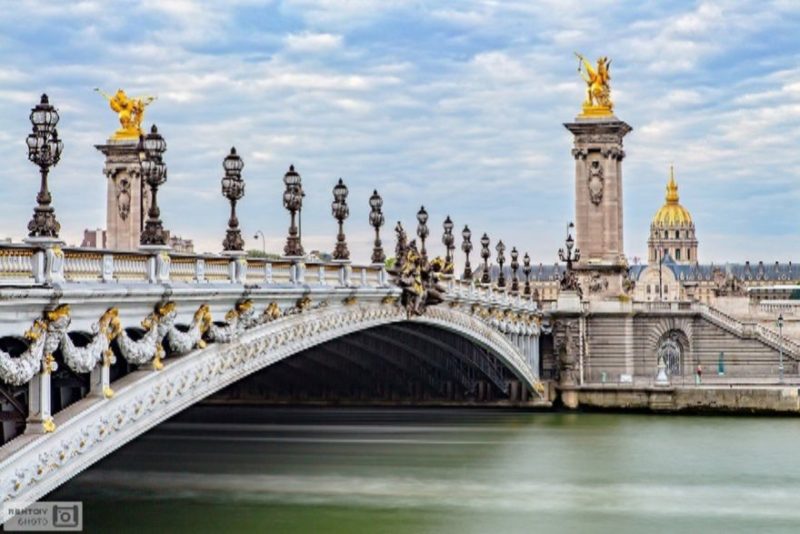April 23 is World Copyright Day. We all know perfectly well that Petersburg is one of the main violators of this institute in architecture, because the city was created by Peter I in the image of European capitals, and then other emperors did not see anything wrong in borrowing ideas abroad. However, Western architects also saw something near the northern capital. About random and non-random similarities tell in our material.
Capitol and St. Isaac's Cathedral
The non-randomness of this similarity was surprisingly documented in 2003. Historians have found that the architect of the Capitol, Thomas Walter, used the drawings of the creator of Isaac, Auguste Montferrand.
Montferrand took the light steel structure as the basis for the dome of the cathedral, and not brickwork, as in the similar Peter and Paul Cathedral in London. It was this innovative idea that the creator of the symbol of American democracy borrowed. However, the American dome is still different from the Russian - it is much lower and heavier.
Interestingly, even before American historians found the drawings of Thomas Walter, George and Laura Bush were in St. Petersburg on an official visit. The presidential couple already in conversation with journalists noted the striking similarity between the Capitol and Isaac.
Bolsheokhtinsky Bridge and Tower Bridge
Of course, Petersburg and London combine not only gloomy weather and constant rain. The central stone towers and metal bends on the sides of both bridges are actually similar. Tower Bridge was opened in 1894, and Bolsheokhtinsky - in 1911, but there is no documentary evidence that the architects of St. Petersburg borrowed something from their London colleagues.
Kazan Cathedral and St. Peter's Cathedral
A fairly obvious association that comes to mind for any tourist due to the semicircular colonnade and large dome. According to the testimony of some historians, Emperor Paul I insisted that the St. Petersburg church resembled the majestic St. Peter’s Cathedral in Rome. “I want a little from St. Peter and a little from Santa Maria Maggiore in Rome,” - this is the phrase the emperor said in a conversation with the architect Andrei Voronikhin, according to the memoirs of the Sardinian envoy in St. Petersburg Joseph de Mestre.
Nevertheless, the two buildings have many differences: in St. Petersburg, the colonnade adjoins the cathedral, which is open to Nevsky Prospect, and in Rome it describes the oval, as if embracing the square in front of the temple. In addition, the difference of the cathedrals is that Kazan has a cross at the base, and a quadrate at the Cathedral of St. Peter.
Alexander III Bridge and Trinity Bridge
The most elegant bridge of Paris, named after the Russian emperor, is twinned with the Trinity Bridge. The fact is that both crossings were laid at about the same time, in commemoration of the Franco-Russian Union. Nikolai II personally took part in laying the bridge over the Seine. “We went to the other side of the Seine, where the laying of the bridge, named after the Papa, took place. We sat in a big tent, where we sang different things. From there we went to the mint, the Academy of Sciences and the City Duma. The order on the streets was brilliant, ”the emperor himself wrote about this trip in his diary.
Trinity Bridge was designed by French architects V. Shabrol and R. Patulyar under the supervision of a special commission made up of Russian architects. The opening ceremony was attended by the President of the French Republic Felix Faure - his visit was reciprocal.
Exchange Building and Parthenon
The temple of commerce, towering above the Spit of Vasilyevsky Island, was erected by the architect Tom de Thomon on the site of the former construction, which was designed by Petersburg-recognized master Quarenghi. The structure of Quarenghi had to be demolished due to the fact that local merchants did not want to allocate funds for his project, and construction stopped for a long time.
It is not difficult to guess that de Thomon, having proposed to demolish the base of the building and thereby strengthen the embankment, for all his life has acquired a sworn enemy.
Stung Quarenghi spread rumors that his opponent allegedly used his fellow students' ideas in the Paris Academy during construction. He was also blamed for borrowing from ancient architects. De Thomon, unfortunately, did not live to see the discovery of his main brainchild, and evil tongues even blamed Quarenghi for this. However, everything was much more prosaic: the architect fell from the scaffolding and soon died from his injuries.
Baltiysky Station and East Station
East Station was opened in Paris in 1849, but it began to acquire its modern appearance only at the beginning of the 20th century. The statues of Strasbourg and Verdun - symbols of the main directions of the station - adorn its western and eastern facades. Of course, the history of the building is closely connected with the First World War - it was from here that the trains with French soldiers went to the Eastern Front. In honor of this, two panels were installed at the station: “Patriots go to the front” and “Return of prisoners of war”.
The modern building of the Baltiysky Station in St. Petersburg was built in 1855-1858, and East Station served as its prototype. At the moment, the station serves the suburban trains.











